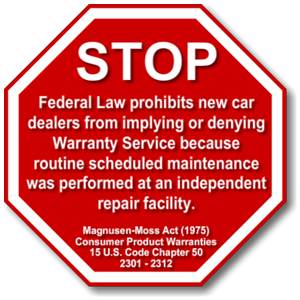Follow Us x
Guide to PCM's
Tips, Suggestions, and Advice
Every time Windows OS or a new phone for example, comes to market, it they always turns out to have bugs and security holes that were somehow missed but must be fixed by downloading and installing the latest patch. It's a never ending cycle of upgrades and patches. Fortunately, it isn't that bad yet with automotive PCMs, but it has become a crutch for automakers who rush products to market that aren't quite ready.
This philosophy of "build it now and fix it later" creates a lot of unnecessary recalls, but at least it gives technicians a way to fix factory mistakes without having to replace any parts.
A reflash may also be required if the factory settings for the OBD II self-diagnostics turns out to be overly sensitive -- especially after a few years of operation.The same goes for drive-ability. What works fine in a brand new car many not work so great after 50,000 or 100,000 miles or real world driving.
Changing the fuel enrichment curve, spark timing or some emission control function slightly may be necessary to eliminate a hesitation, spark knock or other condition that develops over time.
For example, on certain GM vehicles the Check Engine light comes on and sets a code P1406 that indicates a a fault in the position of the exhaust gas re-circulation (EGR) valve.
Cleaning or replacing the EGR valve and clearing the code does not fix the vehicle because the code usually returns. The real problem is the OBD II programming in the PCM. When the PCM commands the EGR valve to open to check its operation, it isn't allowing enough time for the valve to respond.
A brand new valve takes only about 50 milliseconds to open but an older valve may take up to 350 milliseconds or longer -- which isn't long enough to cause a real NOX emissions failure but is long enough to trip a fault code. The fix in this instance is to reflash the PCM with new instructions that allow more time for the EGR valve to respond.
Another example are rich codes that may appear on some late model GM vehicles. The problem here is that the original OBD II self-diagnostic programming doesn't allow enough leeway for changes in intake vacuum that occur as the engine ages.
After 60,000 miles, intake vacuum isn't as high as in a new engine which can create a rich fuel condition. The cure is to flash reprogram the PCM to compensate for the drop in vacuum. When vehicle manufacturers calibrate the on-board diagnostics to meet federal emission standards, they have to draw the line somewhere as to what operating conditions might cause emissions to exceed federal limits 1.5 times.
That's the threshold where a fault code must be set and the Check Engine light must come on. It doesn't mean emissions really are over the limit, but it is possible based on laboratory dyno testing and field experience. Depending on the application, the vehicle manufacturer may even set the limit a little lower just to be safe because the last thing any OEM wants is an expensive emissions recall.
Unfortunately, vehicle manufacturers don't always tell us their diagnostic strategies or even their operating strategies for their computerized engine control systems.
Some service manuals include a fair amount of system background information but others provide almost nothing beyond a basic diagnostic flow chart.
Maybe the engineers who design this stuff think technicians only need flow charts and assembly instructions to fix vehicles today.
But it often takes a much deeper understanding of the system operating logic to figure out what's setting a particular code -- especially when the cause isn't obvious.
The best advice when confronted with a troublesome code that keeps coming back or seems to set for no apparent reason is to check for any Technical Service Bulletins (TSBs) that may have been published. Changes are it might be a programming issue that requires a reflash to fix. Something else to keep in mind with respect to all late model flash reprogrammable PCMs: if you replace the PCM for any reason, the replacement unit must be reflashed before it will start the engine! If the PCM is not programmed, it's just a dumb box like a PC without an operating system.
Some re-manufacturers who supply reconditioned PCMs now flash program PCMs for specific vehicle applications.
But to do this, they need three critical pieces of information: the vehicle identification number (VIN), the type of transmission (manual or automatic) and the emissions type (federal certification or California).
Your other option is to flash reprogram the PCM



